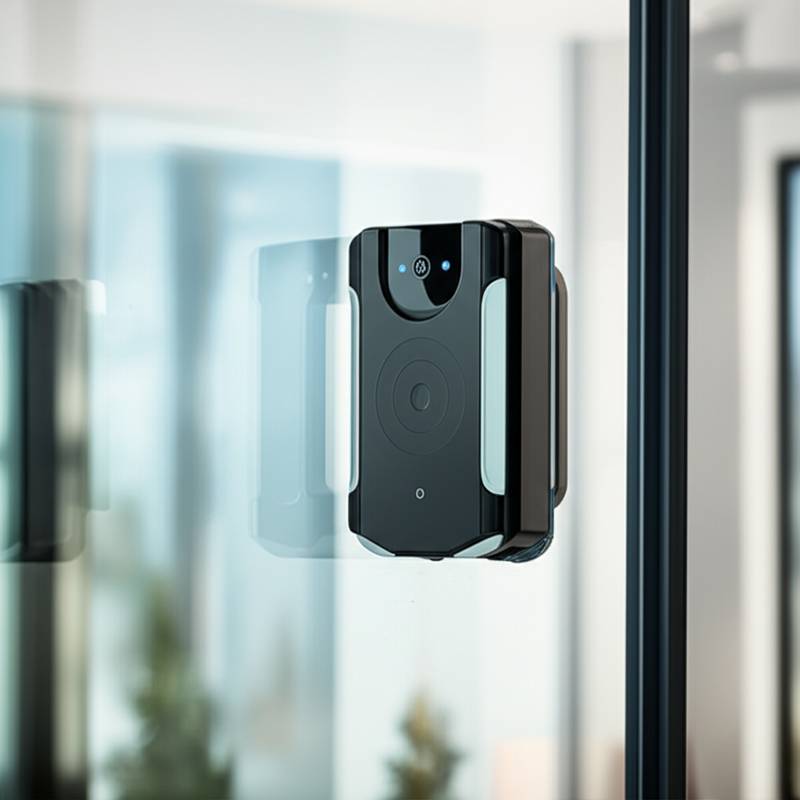The Essential Role of Robotic Window Cleaners in 2025 Smart Homes
Smart homes advance rapidly, and robotic window cleaners emerge as a key innovation for maintaining glass surfaces. These devices convert the laborious process of window washing into an automated routine. Homeowners who prioritize convenience, safety, and clear views increasingly view them as indispensable.
These machines transcend mere gadgets. They signify a fundamental change in approaches to home upkeep, automation, and time management. Integrated with other smart devices, they foster environments that maintain themselves, yielding cleaner, safer, and more pleasant spaces with little oversight.
The Emergence of Automated Cleaning Solutions
Robotic window cleaners align with the expanding trend of automated household care. Research indicates that a majority of homeowners possess at least one smart cleaning appliance, such as a robotic vacuum, mop, or air purifier. As reliability in these tools solidifies, users extend confidence to emerging areas, positioning windows as the subsequent domain.
The rationale proves straightforward. Window cleaning demands physical exertion and poses risks, particularly in multi-level residences or urban high-rises. Automation through robotic cleaners mitigates these hazards and eliminates tedium. The devices adhere firmly to glass, traverse surfaces with precision, and produce streak-free outcomes with scant intervention.
Mechanisms Behind Robotic Window Cleaners
These appliances employ suction or magnetic mechanisms to adhere to glass, progressing methodically while sensors chart the terrain. Sophisticated versions incorporate algorithms to identify borders, impediments, and accumulations of grime. They dispense cleaning agents, scrub, and buff in a fluid sequence.
Contemporary models link to mobile applications, enabling remote initiation, interruption, or programming of sessions. Certain variants sync with voice-activated systems, permitting commands like "Initiate window cleaning" to prompt immediate operation. Such automation and linkage harmonize with the burgeoning network of smart home tools that interact and synchronize activities.
Significance for Contemporary Residences
Efficiency and well-being define the modern home. Pristine windows enhance illumination, elevate spirits, and instill tidiness. However, the required effort often leads to neglect. Robotic window cleaners eradicate this obstacle.
They bolster the paradigm of self-sustaining homes. Comparable to robotic vacuums for floors or automated irrigation for landscapes, these cleaners preserve glass clarity independently. This automation conserves hours monthly and sustains an elegant environment with nominal involvement.
Transition from Novelty to Standard Equipment
Initial smart vacuums appeared as extravagant innovations. Today, they rank as common essentials. Robotic window cleaners trace a parallel trajectory. Costs have declined, capabilities have advanced, and forms have grown sleeker and more intuitive.
Producers tackle primary apprehensions regarding safety. Current models feature redundant suction systems, drop-prevention detectors, and safeguards against power loss. These attributes render them appropriate for diverse settings, from compact apartments to expansive suburban properties. Growing assurance accelerates widespread use, rendering them vital for automation enthusiasts.
Pioneering Brands and Innovations
Select manufacturers lead with exemplary products. Ecovacs, renowned for robotic vacuums, extends its line to window cleaners featuring adaptive navigation for varied glass compositions. Hobot devices utilize boundary recognition and microfiber applicators for expert-level results. Additional firms incorporate onboard cameras for real-time smartphone oversight, enhancing user oversight.
These developments underscore progress in both utility and interaction. Users anticipate seamless incorporation of smart devices into routines, and robotic window cleaners fulfill this with refined execution.
Advantages Extending Past Surface Cleanliness
1. Convenience and Time Efficiency
After securing the device and activating it, the process proceeds autonomously. Residents redirect attention to priorities or leisure while windows achieve brilliance. For households with demanding schedules or remote professionals, this autonomy delivers substantial relief.
2. Safety and Reach
Addressing elevated or inaccessible windows invites peril. Robotic cleaners nullify such threats. They manage external panes that might otherwise necessitate scaffolding or hired experts.
3. Uniform Outcomes
Manual methods risk inconsistencies like smears or oversights. Robotic systems adhere to exact trajectories and apply steady force. This yields reliable, professional-grade polish consistently.
4. Energy Conservation and Illumination Enhancement
Spotless windows permit greater natural light penetration, diminishing reliance on electric sources. This adjustment supports energy reduction and cultivates a luminous, welcoming interior.
Addressing Initial Limitations
Prior iterations of robotic window cleaners occasionally generated noise, operated sluggishly, or faltered in reliability. They might falter on irregular frames or forfeit adhesion mid-task. Newer iterations rectify these via refined sensors, augmented suction, and optimized routing protocols.
Endurance has advanced markedly, supporting multi-pane sessions per charge. Various units self-recharge upon return to base, akin to robotic vacuums. This autonomy proves crucial for sustained utilization, as users demand genuine independence from their intelligent appliances.
Seamless Fusion into Smart Home Networks
Optimal smart homes thrive on device interoperability. Robotic window cleaners integrate effortlessly. Linked to a core controller, they synchronize with adjunct systems. For instance, shades may elevate during cleaning, or detectors may prompt operation post-precipitation or particulate detection.
This synergy establishes a fluid maintenance cadence. Residences respond dynamically, upholding impeccable conditions with reduced manual effort.
Market Dynamics Propelling Adoption
Analysts document robust expansion in robotic cleaning sectors, with window variants exhibiting the swiftest uptake among novices. Key influences include:
- Urban Dwellings: Elevated structures render traditional cleaning unfeasible.
- Demographic Shifts: Seniors value aids that preserve security and autonomy.
- Eco-Consciousness: Precise dispensers minimize water and agent usage, curbing excess.
- Technological Refinement: Heightened dependability fosters user trust.
These elements converge to position robotic window cleaners as a progressive milestone in domestic management.
Advancements Shaping Future Cleaning
Upcoming iterations promise heightened acuity. Developers investigate units that assess atmospheric factors, contaminant varieties, and surface treatments to calibrate methods dynamically. Others may adapt to patterns, timing cleanings during absences or ideal solar conditions for evaporation.
As refinements progress, these tools assimilate more unobtrusively. They form integral components of the unseen framework sustaining flawless, aesthetically pleasing homes.
Embracing Autonomous Home Maintenance
Visualize mornings bathed in unhindered sunlight through immaculate panes, achieved without exertion. Robotic window cleaners realize this vision. They merge utility, security, and sophistication to align with contemporary rhythms.
For those engaged in smart ecosystems, incorporating a window cleaner advances toward comprehensive automation. Novices find it an accessible entry to how such systems streamline routines and amplify ease.
